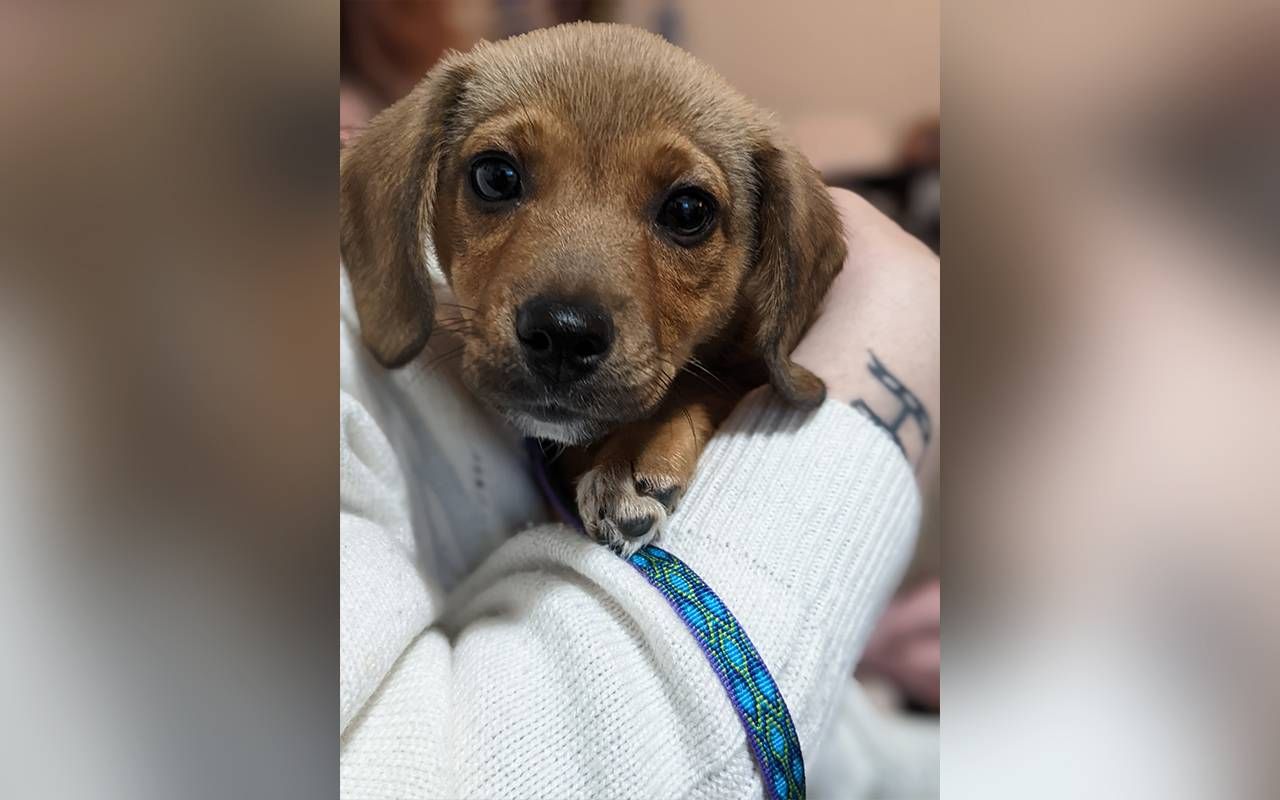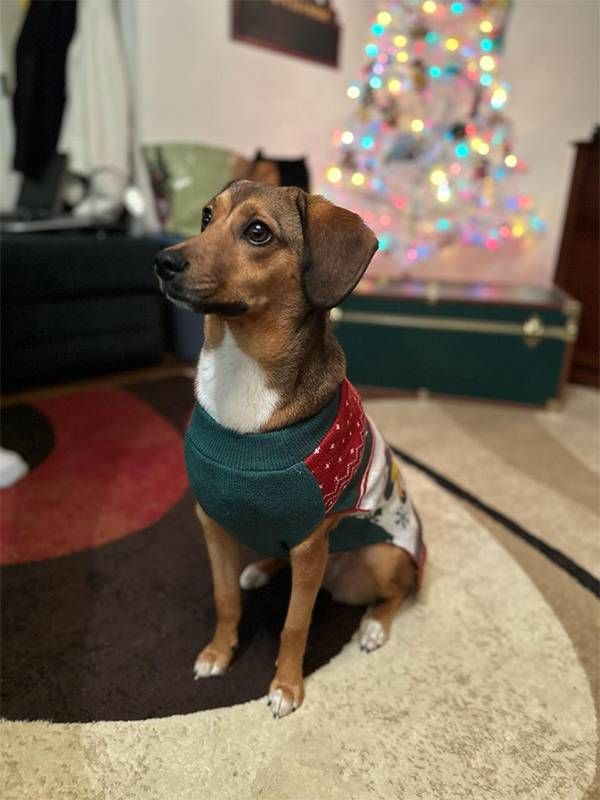The Unexpected Cost of a New Puppy
A first-time dog owner faces the usual hurdles, but is blindsided by the costs of liver shunt surgery
I never had a dog before. I always wanted one and daydreamed about having a little dachshund to cuddle with, but I have seen how much work they are, and I've been told by so many people that dogs cost a lot of money. Because of that, it just wasn't in the cards when my children were younger because I was on a tight budget. Now that my kids are grown that has changed. Then I saw Lucy.

Was I really ready for to adopt a four-month-old Dachshund mix? I wasn't entirely sure because I had just downsized, sold my home, moved and was exhausted from the pandemic and the chaos of the last few years. Plus, I am older now and, admittedly, didn't think I could keep up with a boisterous puppy. But as nervous as I was to have a dog, I couldn't stop thinking about that little wrinkly face.
I adored her and her cuteness, but I really felt like I had made the wrong decision (for her).
Once I brought Lucy home, I became overwhelmingly exhausted with disrupted sleep from puppy cries in the middle of the night, walking her every few hours while trying to work, teaching her good behaviors and keeping her out of trouble. I adored her and her cuteness, but I really felt like I had made the wrong decision (for her). I had a severe case of what is called "the puppy blues," and considered finding her a better-suited parent. She deserved the best and I wasn't sure I could give it to her.
Acclimating to a New Puppy
My children were incredibly supportive during this difficult time. They listened endlessly to my concerns and suggested I find resources to help me. I found a great dog sitter to give me a few hours break each week so I could focus on my work. I joined a Facebook group for new puppy owners where I could ask for advice about anything. I met other friends with puppies, and we scheduled playdates at the dog park at least once a week. During this time, Lucy learned how to pee and poo outside, so everything was falling into place.
But I was about to get blindsided by something serious.
At Lucy's spay appointment in August, I was asked if I wanted pre-op blood work done. The results were troubling and her spay was canceled. Lucy's white blood cell count and liver enzyme numbers were elevated. The vet thought Lucy had caught something at the dog park, so she prescribed antibiotics. Repeat bloodwork two weeks later showed the same result so Lucy was referred to a specialist for further testing.
A few weeks later, she was diagnosed with a liver shunt. According to the American College of Veterinary Surgeons, a portosystemic shunt (PSS) is an abnormal connection between the portal vascular system and systemic circulation. A portion of the toxins, proteins and nutrients absorbed by the intestines bypass the liver and are shunted directly into the systemic circulation — in other words, back into her system.
There are two categories of congenital shunts, extrahepatic (outside the liver) and intrahepatic (inside the liver). Lucy's shunt was inside her liver.
A Serious Situation
"The liver shunt can be found incidentally, such as having pre-op blood work done, or clinically, when the dog presents with urinary problems, seizures, or mental dullness such as looking off into space, or because of a delayed recovery from anesthesia for a spay or neuter," explained Doug Palma, DVM, at Guardian Veterinary Specialists in Brewster, New York.
I was fortunate that Lucy had not had a seizure yet. The only symptom she had since her adoption was soft poops, which I thought would be solved by finding her the right food. However, to fix the shunt and prevent future issues so Lucy could lead a normal doggie life, she needed extensive surgery.
I was floored at the diagnosis, scared about Lucy having seizures and worried about how I was going to pay for it all.
According to Rover.com, the costs of a puppy's first year typically ranges from $1,050 to $4,480. That doesn't include any potential medical conditions they may have that can balloon the costs significantly. The cost of Lucy's surgery? $10,000. I was told it was one of the most expensive surgeries she could ever have.
I was floored at the diagnosis, scared about Lucy having seizures and worried about how I was going to pay for it all. I had started to wish she had been adopted by some rich family who didn't even blink at the price tag. This wasn't about having enough money for a new pair of boots. Lucy's life was at stake. I could either pay for the surgery in full or, if I didn't have the money, wait until she showed symptoms of seizures and then treat accordingly. The problem with the latter, according to Palma, was that the length of her life would have been shortened significantly once the symptoms began.
"There are some dogs who live a normal life with medical management and there are some dogs that will have persistent neurologic symptoms," said Palma. "And then there are a small subset of dogs that will go into liver failure. However, if you compare surgery and medicine, medicine will not perform as well as surgery."
The Benefit of Pet Insurance
The good news? I had done my homework and signed up for pet insurance the day I brought her home. Because the diagnosis occurred after I signed her up and not before, her surgery and all medications related to it was 90% covered. Thankfully, I only paid $1,000 out of pocket. It was still a hit on my budget, but at least I could afford that.

My insurance premium each month for Lucy is only $42 and it has been completely worth it. Lucy was spayed during the same procedure, so she only endured one surgery instead of two. After three months of taking five medications per day, she received a clean bill of health and is completely off her meds. She just celebrated her first birthday and is the cutest, happiest dog. And like everyone said, I can't imagine my life without her now.
According to the North American Pet Health Insurance Association (NAPHIA) State of the Industry Report 2022, the total number of pets insured in the U.S. at year-end 2021 was 3.9 million, a 28% increase since 2020. The average accident and illness premium for dogs was $583 a year or $49 a month. The average accident and illness premium for cats was $343 a year or $29 a month.
Lucy's first nine months with me have been challenging in many ways, but I'm glad I worked through them all. I'm also proud that I did my homework and signed up for pet insurance. If you do not have any, there are many different options that cover unforeseen veterinary fees and related expenses. NAPHIA states that the three main types of coverage are Accident & Illness (sometimes with embedded wellness coverage); Accident Only; and Wellness (also called routine or preventative care) which may include vaccinations, tests, and dental work.

